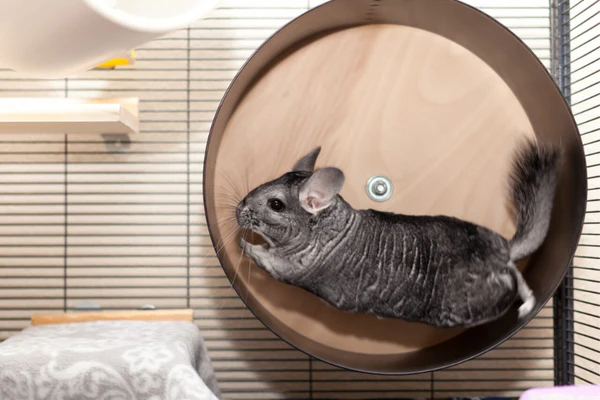To create a safe and enjoyable environment for your chinchilla, it’s important to choose a cage specifically designed for them. Look for a cage with fine mesh, as well as sufficient height and space. Chinchillas are nocturnal and are much more active at night, moving around unpredictably in all directions. To prevent falls, consider adding spiral steps or similar structures for safe movement.
Recommended Cage Size
For your chinchilla’s comfort, ensure that the cage is spacious enough. A cage that is 80–90 cm wide, 60–100 cm tall, and at least 40–60 cm deep is ideal. For younger chinchillas, avoid cages with large mesh gaps, as they may get their heads stuck or escape, leading to potentially serious accidents.
Cage Materials and Safety
It’s crucial to choose a chinchilla cage made from sturdy materials like stainless steel that resist rust. The mesh should be fine enough to prevent escapes, as chinchillas can easily get out of cages meant for other pets like hamsters or cats. Since chinchillas can sometimes figure out how to open cage doors, it’s a good idea to secure the door with a carabiner for extra safety.
Ease of Cleaning
A cage that’s easy to clean is essential for both you and your chinchilla. Opt for a cage with large openings, making it simple to access items like nests and sand baths. Cages with a top-opening design or a pull-out tray at the bottom are especially convenient for cleaning. Additionally, a cage with wheels will make it easier to move and clean around.
Using a Carrier
Getting your chinchilla used to a carrier can help reduce stress during transportation. A carrier is also handy when cleaning the cage or visiting the vet. Look for a carrier that opens from both the sides and top, allowing you to easily pick up your chinchilla when necessary. A small carrier cage with these features is recommended for stress-free handling.



Comments